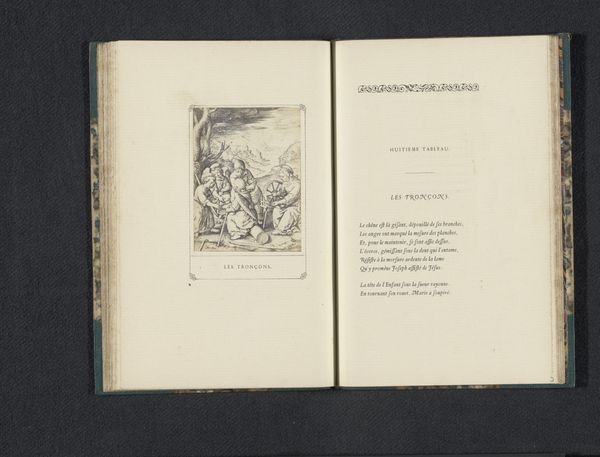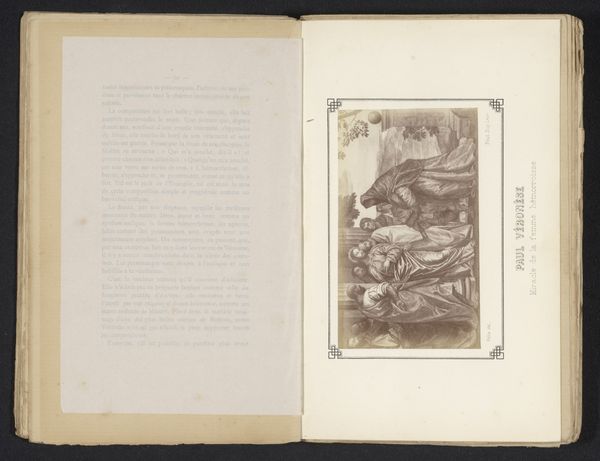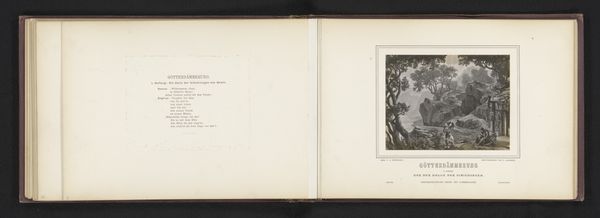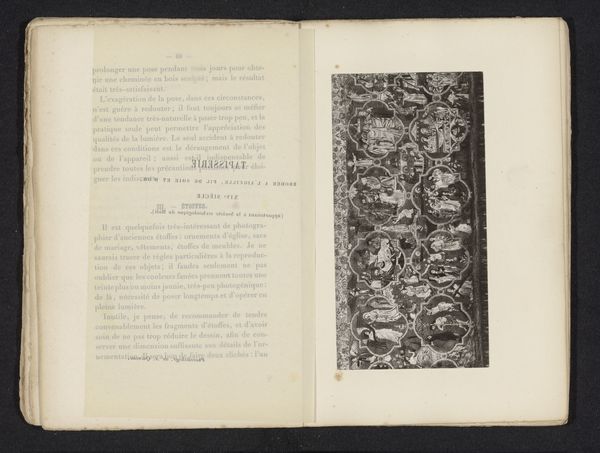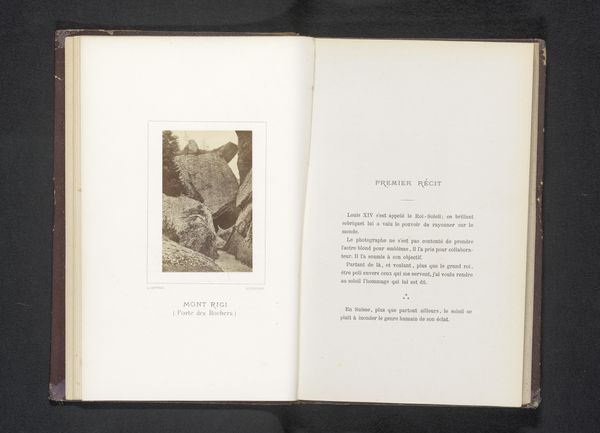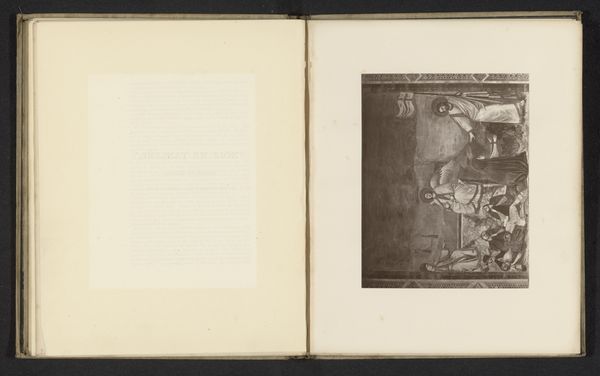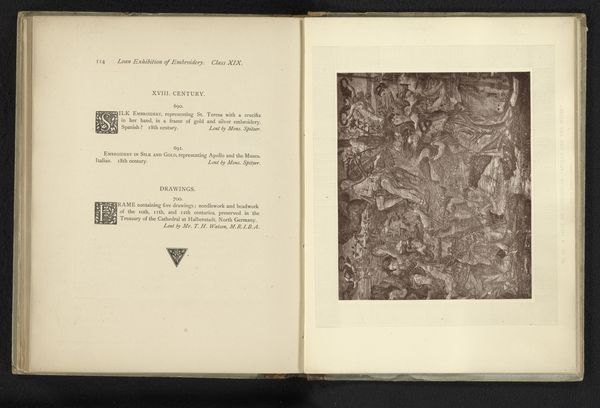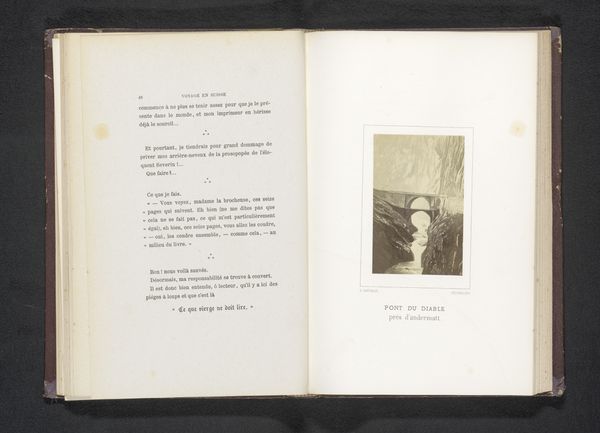
drawing, print, paper, engraving
#
drawing
#
narrative-art
# print
#
paper
#
genre-painting
#
engraving
Dimensions: height 82 mm, width 64 mm
Copyright: Rijks Museum: Open Domain
Curator: This image presents us with a reproduction of “Le balai” by Edmond Fierlants, made before 1860. It's rendered as an engraving on paper, housed within a book. The scene it depicts strikes me immediately with a sense of contained chaos—or perhaps, more gently, domestic hubbub. What do you notice? Editor: That’s an apt description. There's a real feeling of a community dynamic within the confined room. Visually, the central mother and children form a core. Note how she’s bathed in light compared to the background figures. Given the period, how does this scene engage with then-current ideas around gendered labor and domestic space? Curator: The hearth, visually prominent, firmly situates the mother at the center of domestic duties, while other figures, presumably children, assist. There is a narrative emphasis on family life, though perhaps not presented in an entirely romanticized light. You see labor in play, which is a common visual device during that era that softened the harder reality for many. Editor: Indeed, the fire, though a functional source of heat and means of cooking, also radiates symbolic warmth, uniting the family, though somewhat sentimentally, which might belie a very different experience for that same population and gender. But what’s especially striking to me is the careful placement of everyday objects—the pots hanging above, the clothing, even the floorboards—they ground the scene in a particular reality, or desired reality, giving emotional weight. Curator: I think that touches upon a complex and somewhat ironic theme that can be further explored when assessing that time and setting; although ostensibly a personal or family-centric presentation of domesticity, its mass reproduction in printed form reflects a broader cultural expectation. That domestic vision, especially at this moment, excludes other possibilities. It becomes prescriptive and excludes lived experiences. Editor: Absolutely. It's a reflection, perhaps, of a burgeoning middle class, who desired to emulate, or even imagine their own ideal of family dynamics. Curator: Thinking about this from an intersectional point of view, class, gender, and the emerging structures of labor are all entwined. Editor: Seeing "Le balai" prompts me to think about how certain archetypes, or ideas, get solidified. Curator: Ultimately, this piece compels us to examine whose stories are amplified, and whose remain in the shadows.
Comments
No comments
Be the first to comment and join the conversation on the ultimate creative platform.
